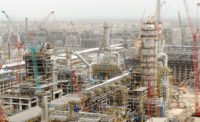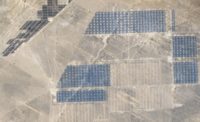While oil plays a commanding role in global energy markets, its position as a fuel source for electric powerplants ranges from dominant in certain countries to modest or non-existent in others.
Oil is mostly used by countries who have abundant supplies of it, such as the Persian Gulf countries, Russia and Venezuela. “If you don’t have to use oil, you’re not going to build oil-fired plants unless you’re sitting on it,” says Chris Bergesen, editorial director for UDI Productsat Platts—like ENR, a unit of McGraw-Hill.
Primarily because of domestic subsidies, Saudi Arabia is one of the countries most dependent on oil-fired plants, which provide 65% of its electricity generation. It is one of a very few countries building new oil-burning plants. Two new plants are currently being developed, both on the Red Sea coast.
One is Yanbu 3, which was awarded to a team led by Samsung Engineering, partnering with Shanghai Electric and Saudi Arabia’s Al Toukhi. The group received a $1.5-billion EPC contract in November 2012. Expected to be completed by 2017, the 3,100-MW power-and-desalination plant will supply the Yanbu industrial complex.
The Saudi Electricity Co. awarded a $2.6-billion contract for the second plant, Rabigh 2, to a group led by ACWA Power International and partner Samsung C&T Corp. It is slated to produce 1,813 MW and begin operating in 2016.
Iraq, another major oil producer, generates 87% of its electric power from plants powered by crude oil, heavy fuel oil or diesel. Iran also has a sizable fleet of oil-fired plants, which as recently as 2007 were generating 17% of its electricity.
One country that has recently become more reliant on its fleet of aging oil-fired plants is Japan. They are used primarily as extra capacity to meet peak demand, and less than 10% of total electricity produced there in 2010 was oil-generated.
However, following the shutdown of Japan's nuclear powerplants on the heels of the powerful tsunami in March 2011, Japanese electric utilities have been burning more fuel oil and direct crude to make up for lost nuclear generation. In 2011, the most recent year for which statistics are available, Japan generated 14.4% of its electricity from oil-fired plants, according to the Japan Electric Power Information Center.
Over the past few decades, combined-cycle powerplants, which burn natural gas, have proved to be more efficient than oil-burning plants, and they have proliferated. In addition to being less efficient, oil has environmental disadvantages.
"Although oil is easy to handle and full of BTUs, it is problematic environmentally, since fuel oils contain sulfur and heavy metals," says Bergesen.
Oil plays a negligible role in U.S. electric power generation. The small number of oil-fired plants, mostly on the East Coast and in California and Hawaii, contribute less than 1% of the country’s electric power. The last oil-fired plants to be built in the U.S. were completed in the early 1980s.
View the slideshow to see the top oil-fired plants around the world.















Post a comment to this article
Report Abusive Comment